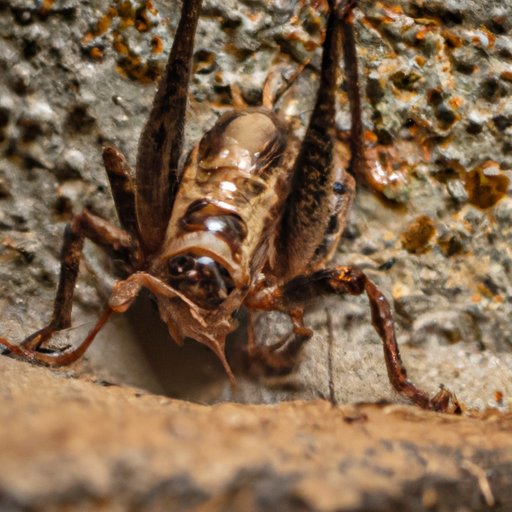
The Ultimate Guide to Getting Rid of Spider Crickets
Have you ever seen a spider cricket in your home? These creepy-looking critters are a common problem, especially in damp and dark areas like basements and crawl spaces. Not only are they unsightly and difficult to catch, but they can also cause damage to fabrics, carpets, and even food. In this article, we will explore the best ways to get rid of spider crickets and prevent them from coming back.
Identify Spider Crickets and Their Habits
Spider crickets, also known as cave crickets or camel crickets, are found across the United States. They have a distinct appearance with long legs, humped backs, and brown or tan colors. Despite their name, they are not true crickets and do not make chirping sounds.
Spider crickets often make their homes in damp, dark areas like garages, basements, and crawl spaces. They are also commonly found in areas with leaf litter and debris. They feed on a variety of organic materials, including fabrics, paper, and even other insects.
Prevent Spider Crickets from Entering Your Home
The best way to get rid of spider crickets is to prevent them from getting into your home in the first place. Seal any cracks and crevices in your foundation, walls, and windows to eliminate potential entry points. Use weather stripping on all doors and windows to ensure that they are tightly sealed. Additionally, make sure that screens on doors and windows are intact and free from holes.
Make Your Yard Less Hospitable to Spider Crickets
Spider crickets are attracted to cluttered and overgrown areas. Keep your grass trimmed short and regularly remove any leaf litter, branches, and debris from your yard. This will make your yard less appealing to spider crickets, encouraging them to move elsewhere.
Use Natural Deterrents
If you are looking for a natural way to deter spider crickets, consider using cedar chips. These chips can be placed around the perimeter of your home, in crawl spaces, or in basement areas to discourage spider crickets from entering.
Another natural option is to make a vinegar and water solution. Mix equal parts white vinegar and water in a spray bottle and apply the solution to areas where you have seen spider crickets. The scent of the vinegar is unpleasant to the crickets and will deter them from sticking around.
Use Insecticides
If you are dealing with a severe spider cricket infestation, using insecticides may be your best option. Look for products that contain insecticidal dust, which is designed to cling to the legs of the crickets. This will help to transfer the insecticide to other crickets when they come in contact with one another.
When applying insecticides, make sure to follow the instructions on the product carefully. Wear gloves and a mask to protect yourself from exposure, and keep children and pets away from the area until the product has dried completely.
Call in a Professional
If you have tried all of the above methods and are still dealing with a spider cricket infestation, it may be time to call in a professional pest control service. They will have access to stronger insecticides and equipment that may be more effective at eliminating the problem.
When looking for a pest control service, make sure to do your research and choose a reputable provider. Look for companies with positive reviews, certifications, and years of experience.
Conclusion
Getting rid of spider crickets can be a challenge, but with the right approach, it is possible. Remember to seal your home from potential entry points, keep your yard clean and trimmed, use natural deterrents like cedar chips and vinegar, and only use insecticides as a last resort. If you are still struggling with a spider cricket infestation, don’t hesitate to call in a professional. By taking the necessary steps to eliminate these pests, you can protect your home and belongings and enjoy a pest-free living space.




